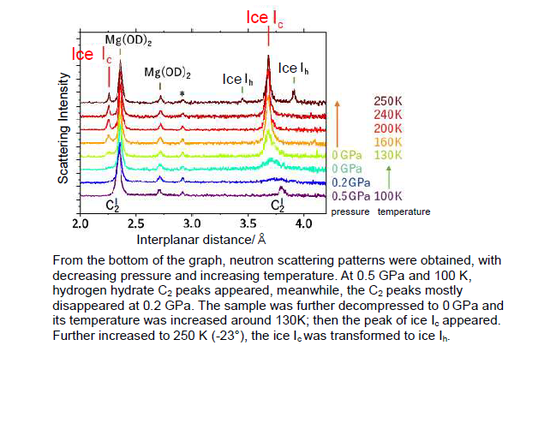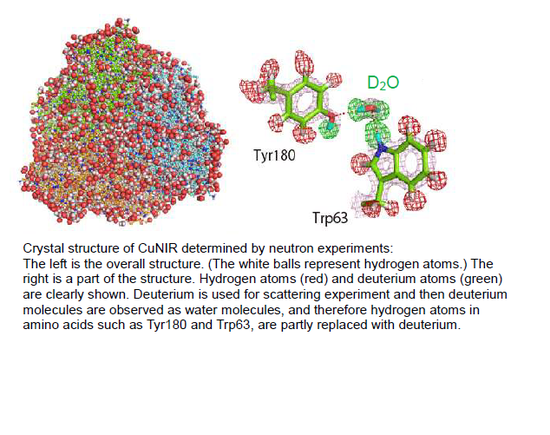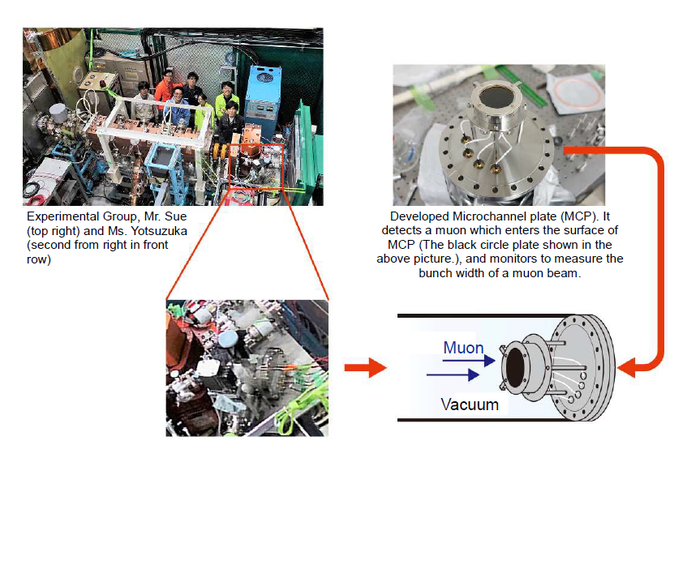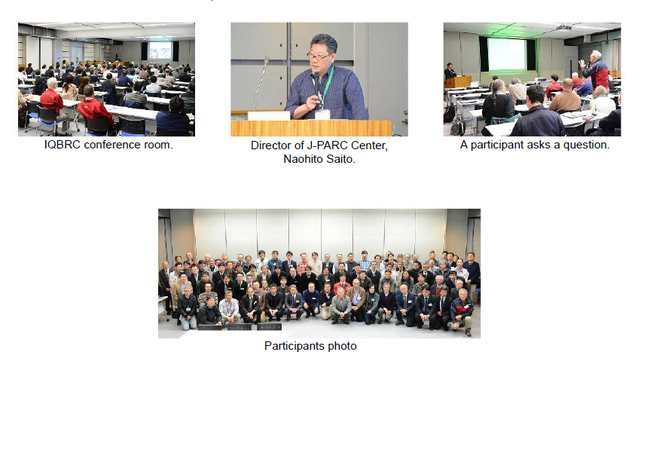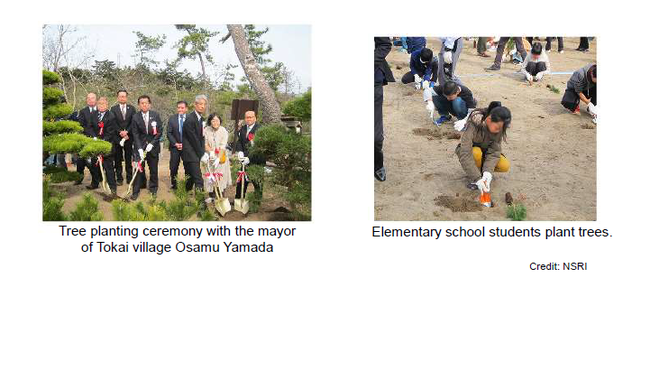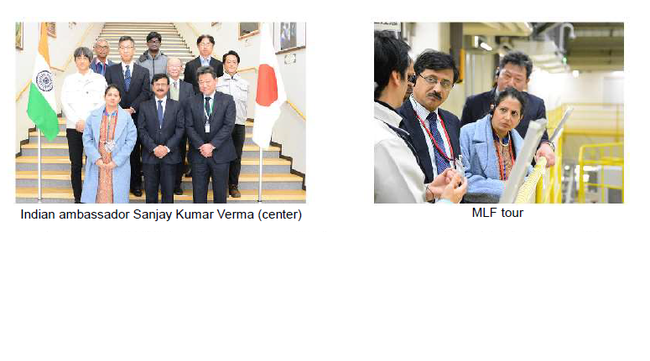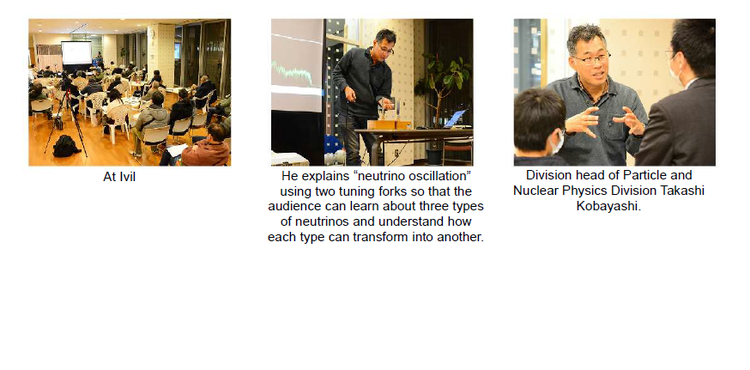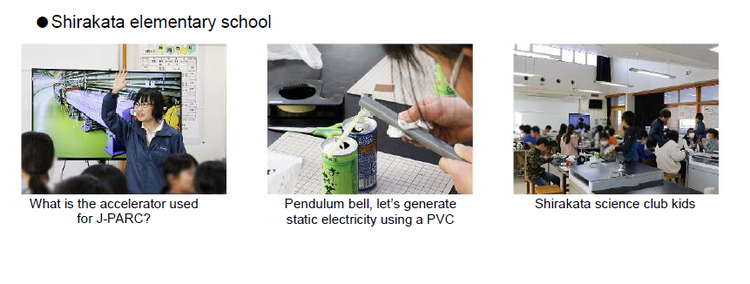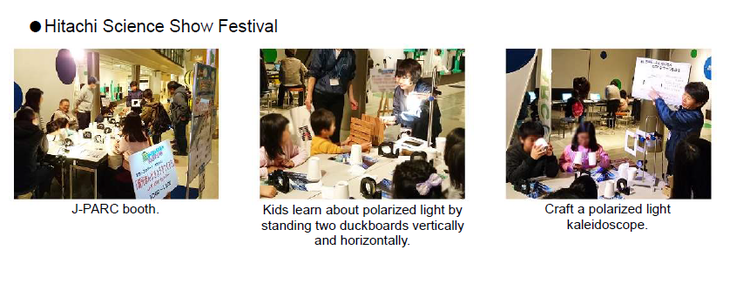J-PARC NEWS February 2020 (Issue #178)
■Start of Hyper-Kamiokande Plan
The Hyper-Kamiokande plan is an international scientific project for collaboration on neutrino research, with Japan as the host country. Recently, a supplementary budget for fiscal 2019 was approved, and the project will now formally commence. The Hyper-Kamiokande plan aims to further accelerate elucidation of the origin of matter in the universe—the objective of the T2K experiment. To that end, a detector will be constructed from ultra-high-sensitivity optical sensors, and water tanks with an effective volume 8.4 times that of Super-Kamiokande, and the sophistication of the J-PARC accelerator and neutrino facility will also be improved. This research will proceed through international collaboration, with participation of 17 of the world's countries (as of June 2019). Tasks like equipment fabrication will be divided amongst the participants, with the aim of starting the experiment in 2027. Please also read this. https://j-parc.jp/c/en/topics/2020/02/12000416.html

■Neutrino Experimental Facility (Nu) Begins 500-kW Operation
The J-PARC MR (Main Ring) accelerator began operation in 2009 for the Hadron Experimental Facility and Neutrino Experimental Facility (Nu), and the output intensity of the beam for the Nu has thus far been increased step-by-step from operation at about 100 kW. From the beginning of January 2020, we began to supply a beam to the Nu with a maximum power of 500 kW, obtained with an operation cycle of about 2.5 seconds of the current MR. This achievement is a major step toward the maximum designed output of 750 kW of the MR. The plan is to roughly halve the current operation cycle and achieve higher output by taking steps such as reinforcement of the radio-frequency (RF) acceleration cavity and replacing the electromagnet power supply.
■Creation of Ice Without Disorder (February 3, Press Release)
The ice we ordinarily see is hexagonal ice crystal (ice Ih), in which the water molecule layers are arranged in an alternating fashion. When temperature and pressure are changed, however, other forms of ice are produced, with different arrangements of molecules. One of these is "ice Ic," with a different stacking of layers (cubic ice crystal), and this form is known to exist in places like clouds in the stratosphere at the north pole and south pole, in outer space, and in rapidly-cooled biological samples and frozen foods. Numerous examples have previously been reported of producing ice Ic, but in all of these cases, there was partial disorder in the layer stacking, and perfect cubic ice crystal had not been produced. Associate Professor Kazuki Komatsu of the University of Tokyo has succeeded for the first time in the world at synthesizing ice Ic with no disorder in its stacking. This was done by using the "Mito system" for a low-temperature, high-pressure press, devised by Professor Komatsu himself, at J-PARC's High-Pressure Neutron Diffractometer (PLANET) to synthesize "hydrogen hydrates" with the same framework as ice Ic at room temperature and high pressure, and then removing hydrogen by cooling and lowering pressure. It was found that, compared to ice with disorder, ice made in this way exists stably up to the comparatively high temperature (for the low-temperature world) of 240K (–33℃). In the future, the properties of this ice will be measured, and it will be compared against ice with disorder. This will clarify the effects which disorder has on the properties of ice, and there are expected to be various applications. For details, please refer to the following paper. https://www.nature.com/articles/s41467-020-14346-5
■Meeting the Challenge of Quantum Structure Biology for Investigating the Essence of the Phenomenon of Life — Using All-Atom Structure Determination to Elucidate the Reaction Mechanisms of the Enzyme which Drives the Earth's Nitrogen Cycle (February 10, Press Release)
Environmental pollution caused by excessive influx of nitrogen compounds has become a problem in recent years due to the activities of human beings. The focus of this research is copper-containing nitrite reductase (CuNIR), an enzyme which converts nitrite ions (NO2- ) into nitric oxide gas (NO) in the process of denitrification, where nitrogen compounds in the soil and water are reconverted in stages into nitrogen gas by the action of microorganisms, and returned to the atmosphere. To understand the action of the proteins called "enzymes"—substances which promote the chemical reactions which occur in living organisms—it is necessary to accurately determine the three-dimensional structure of the molecule at the atom/electron level, and based on that structure, to experimentally measure, and predict through theoretical calculation, which parts move and how, which parts act on other molecules, and where electrons flow through. Dr. Taro Tamada et al. from the National Institutes for Quantum and Radiological Science and Technology have obtained findings clarifying the details of the reaction mechanisms by carrying out high-precision neutron crystallography of CuNIR using the iBIX neutron experimental instrument in Ibaraki Prefecture constructed at J-PARC, and accurately observing the hydrogen atoms that are essential for understanding chemical reactions due to CuNIR. The observation results support predictions based on quantum mechanical theory, which describes micro phenomena. Direct observation of hydrogen atoms through neutron structure analysis opens up the new domain of "quantum structure biology" which attempts to understand the essence of the phenomenon of life from the quantum level. These results provide a foundation for technology to appropriately control each stage of chemical reactions that proceed in CuNIR, such as hydrogen ion transport and electron transfer, and this is likely to lead to industrial applications in the future. For details, please refer to the following article. www.pnas.org/cgi/doi/10.1073/pnas.1918125117
■Nagoya University Graduate Students, Yuki Sue and Mai Yotsuzuka, Develop Time Distribution Monitor for Beams, Indispensable for Realizing High-Quality Muon Beams (February 13, posted on the J-PARC website)
An experiment is being planned at J-PARC to achieve simultaneous, high-precision measurement of basic properties of the muon elementary particle—the anomalous magnetic moment (g-2) and electric dipole moment (EDM). A high-quality muon beam, controlled in terms of spatial and temporal spread, is essential for precision measurement. To achieve this, the generated muon beam is decelerated once, and then accelerated again. Yuki Sue and Mai Yotsuzuka (graduate students at Nagoya University) developed a monitor for measuring the time distribution of the muon beam after acceleration, and using the test muon beamline of J-PARC's Materials and Life Science Experimental Facility (MLF), they were the first to successfully measure a beam time width of 500 ps (picoseconds; 1 ps = 10-12 s), one order of magnitude shorter than before acceleration. Actual g-2/EDM measurement will require a time resolution of a few tens of ps, which is another order of magnitude shorter. In the laboratory, this monitor has recorded a time resolution of 65 ps. For details, please check this article. https://j-parc.jp/c/en/topics/2020/03/13000497.html
■Held 7th Accelerator Facility Safety Symposium (January 23–24, IQBRC)
On January 23–24, the 7th Accelerator Facility Safety Symposium was held at the Ibaraki Quantum Beam Research Center (IQBRC). The main themes this time were "Interlocks at Accelerator Facilities" and "Ensuring Safety in Machine Work." There were 125 participants. Regarding interlocks, there were oral and poster presentations on operations at seven accelerator facilities in Japan, and regarding machine work, there were reports on initiatives at J-PARC, and safety management in engineering research at the University of Tokyo. There were significant exchanges of information and views in both areas. There was also a special talk on the situation and safety considerations regarding the fire which occurred in April 2019 in the accelerator structure assembly room at the electron-positron injector linac on the KEK Tsukuba Campus, and a report on efforts to ensure safety. At the end, it was announced that the International Technical Safety Forum (ITSF)-2020, where participants will exchange information on safety at large accelerator facilities, will be held in November 2020 at the Riken Wako Campus.
■Held Muramatsu Seiran Black Pine Grove Regeneration Project — Black Pine Tree-Planting Experience — (February 15, Tokai Village)
The pine grove near Muramatsu Seiran, one of the 12 scenic views of Tokai, has been damaged due to pine wilt caused by the pine wilt nematode, and the beautiful scenery has been lost. J-PARC is a research facility built at one corner of this pine grove, and is visited by more than 30,000 people every year. Environmental improvement and tree-planting of black pines were recently organized by Tokai Village as a project to regenerate the black pines at Muramatsu Seiran. Hiroyuki Oigawa (Director General, Nuclear Science Research Institute), Naohito Saito (Director, J-PARC Center), and Masatoshi Futakawa (Deputy Director of the J-PARC Center) participated together with elementary school children from the village, and it is hoped these efforts will help revive the greenery of the pine grove.
■A Visit from Sanjay Kumar Verma, Ambassador of India to Japan (February 5)
On February 5, His Excellency Sanjay Kumar Verma, Ambassador of India to Japan, visited KEK and J-PARC with his team. At J-PARC, Naohito Saito, Director of the J-PARC Center, provided an overview of research at J-PARC, and then the group toured three facilities: the MLF, Neutrino Experimental Facility, and Hadron Experimental Facility. Going forward, there is expected to be greater research cooperation between the two countries in the fields of particle and nuclear physics, and materials and life science.
■J-PARC Hello Science "Investigating the Origin of Matter in the Universe with Mysterious Neutrino Particles" (January 31, Tokai-mura Industry and Information Plaza "iVil")
At the January Science Cafe, Takashi Kobayashi, Head of the Particle and Nuclear Physics Division at J-PARC Center, spoke on the neutrino elementary particle. First, he explained the current picture of the world of elementary particles. He pointed out that experts believe elucidation of the mass and oscillation of the three types of neutrinos will help clarify the origin of matter. Using video of an experiment showing how electrons (elementary particles) passing through two slits in a screen produce a striped pattern, he explained that elementary particles have both a particle and wave nature. Then he discussed how neutrinos combine different oscillation frequencies (weights), and just as beats are produced when two tuning forks of different frequencies are sounded, events occur where neutrinos take on different forms as time passes. In next year's Hello Science, we plan to introduce the T2K experiment and the Hyper-Kamiokande plan as a continuation of this session.
■J-PARC Science Experiment Classes (February 13, Tokai-mura Shirakata Elementary School; February 16, Hitachi Civic Center)
On February 13, students constructed pendulum bell projects in the science club at Shirakata Elementary School. These pendulum bells make a sound when a thumb tack hung by a thread between two steel cans is swung with static electricity. The children worked hard to generate static electricity by rubbing vinyl tape with tissue paper, and cheered when their bells made a sound.
There was a polarizing kaleidoscope event on February 16, the final day of the Hitachi Science Show Festival held for nine days at the Hitachi Civic Center Science Museum. Many parents and their children visited the project class for making kaleidoscopes with paper cups, polarized sheet, and transparent sheet. After listening to an explanation of the properties of light, parents and kids worked together—affixing cellophane tape to transparent sheets, and finishing the kaleidoscope by attaching polarized sheet. Then they observed the patterns that appear when the kaleidoscope is turned.


